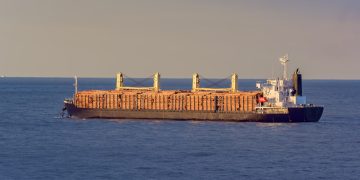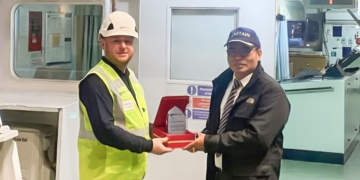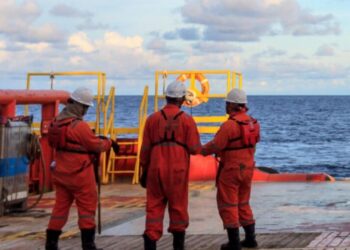In November 2021, the UK Supreme Court validated “unseaworthy” judgment in the high-level CMA CGM Libra case, redefining the landscape on dealing with cargo claims. The decision is expected to act as the starting point in any maritime case concerning “due diligence” and “seaworthiness” in a charterparty from now on.
The decision follows a previous ruling by the UK Admiralty Court in 2019 and Court of Appeal in 2020 rejecting a shipowner’s claim for general average because the vessel was unseaworthy due to a defective passage plan. The CMA CGM Libra is an interesting case for triggering divided opinions across the shipping industry regarding the conditions as to whether a vessel should be considered unseaworthy. Now the Supreme Court upheld the previous rulings confirming the criticality for shipping companies and Masters to ensure passage plans are carefully prepared in each voyage.
The incident
Just after midnight on 17 to 18 May 2011, the Maltese-flagged container ship CMA CGM LIBRA had just departed from Xiamen, China heading to Hong Kong, with a total of 5,983 containers onboard. Shortly after leaving the port, the 11,356 TEU ship ran aground on rocks after departing from the marked fairway.
The shipowner declared General Average leading to about 92% of the cargo interests to be settled. However, about 8% refused to contribute voluntarily, claiming the shipowner’s fault, in terms of errors in the ship’s passage plan and consequent unseaworthiness before the commencement of the voyage, so lack of due diligence by the shipowner in this respect.
A bit about General Average
In maritime law, General Average means that all stakeholders in a sea venture proportionately share any losses resulting from a voluntary sacrifice of part of the ship or cargo to save the whole in an emergency.
The establishment of General Average can be traced in the York Antwerp Rules of 1890, a set of maritime rules outlining the rights and obligations of both ship and cargo owners in the case that cargo must be jettisoned for the ship to be saved.
Under these rules, which still apply today after several updates in 1994, 2004 and 2016, General Average clearly requires three conditions, all of which must be met for the rules to apply:
- The danger to the ship must be ‘imminent’ and apparently ‘inevitable’.
- There must be a voluntary jettison of some portion of the ship cargo for avoiding this peril.
- This attempt to avoid the imminent common peril must be successful.
Why was the vessel deemed unseaworthy?
Cargo interests criticized the passage plan in several aspects, but the main area of concern was that the passage plan did not take into account a Notice to Mariners by the United Kingdom Hydrographic Office (UKHO), issued a few weeks earlier, advising that depths on the approaches to Xiamen were less than charted, which constituted a failure to record “all areas of danger” as per IMO guidelines for passage planning.
At the time of the incident, the crew was using the paper chart BA 3449, but the ship was also equipped with an “unofficial” electronic chart (not an approved ECDIS, as this was not mandatory at the time) that did not depict the shoal where the vessel grounded. Apart from this, the paper chart itself did not indicate the full extent of the shoal where the ship grounded, and it had not been updated with another warning issued by UKHO in December 2010 which indicated unreliable depths shown on the chart in the approaches to Xiamen.
Due diligence describes the minimum care that a business or person is normally expected to take before entering into an agreement, contract or act. In shipping, Article III of the Hague Visby Rules and Hague Rules require the shipping company to exercise “due diligence” before and at the beginning of the voyage in order to have a seaworthy ship. Physical integrity, proper equipment and sufficient crew members generally constitute a “seaworthy” ship.
Lessons learned
The case has been contradictory, as the owners argued in favor of a distinction between the vessel’s quality of seaworthiness or navigability and the crew’s act of navigating. They actually supported that, since the carrier has equipped the vessel with all that was necessary for it to be safely navigated including a competent crew, the crew’s failure to safely navigate the ship is not a lack of due diligence by the carrier.
In this respect, a key lesson derived from the CMA CGM Libra case ruling for the future is that a shipowner will be liable for a causative error of navigation provided that this error occurred also before the commencement of the voyage. The case is a landmark decision in maritime law, as it confirms that the well-known legal principles of ‘due diligence’ and ‘seaworthiness’ also include passage planning, in the same way as they do other aspects of seaworthiness.
The carrier is liable for a failure to exercise due diligence by the master and deck officers of his vessel in the preparation of a passage plan for the vessel’s voyage
…the UK Supreme Court explained.
This also means the shipowner will be unable to rely on a defence of due diligence, under the Hague Visby Rules and Hague Rules, to make the vessel seaworthy, because the crew’s negligence regarding the passage plan was attributable to the carrier. And of course, the case underlines once again the importance of safe passage planning and the need of ensuring all charts onboard are always up to date.

































































